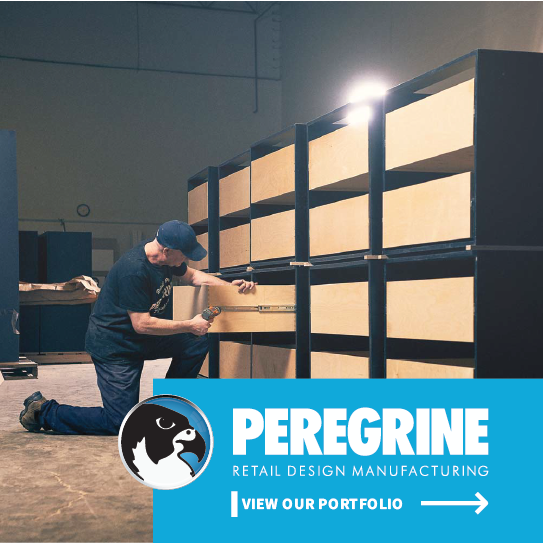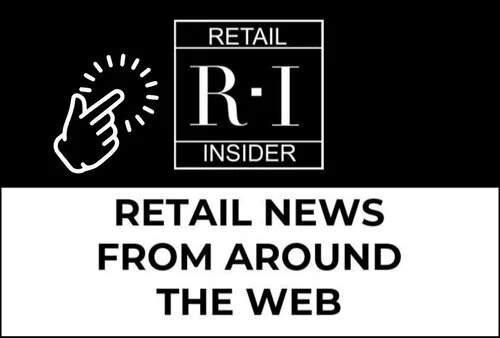Violent Robberies and Organized Crime Hit Vancouver Retailers
/Vancouver’s ‘Luxury Zone’ houses some of the most prestigious retailers in the world. (Note: Retail Insider is using photos only as examples and is not implying that these retailers were targets of theft) PHOTO VIA LEE & ASSOCIATES
By Mario Toneguzzi
Several violent robberies at luxury stores in Vancouver highlight the need for retailers in that space to do a better job protecting themselves.
For thieves, luxury products provide a more enticing, and lucrative target than regular stores. They are higher value, and command a higher resale price over the various reseller platforms which is mostly online now (often with a client base of ordinary everyday unsuspecting consumers) but still existing in the bricks and mortar environment, just like the regular shops.
“On the West coast, there have been grab and runs and robberies of that nature at luxury stores,” said Stephen O’Keefe, a Toronto-based veteran of the retail industry and loss prevention industry.
“Electronics are also a major issue. The smart-phone thefts that have been an ongoing problem started with a group out of California. They moved up along the coast to Vancouver, recently making their way across the country, and now known to be in the South Western Ontario region. They are highly organized and very determined, with no fear of causing damage or injury in the course of their activity.”
‘The Carlyle’ complex in Vancouver houses several well-known luxury retailers. photo via century 21
Thieves recently hit several stores along the upscale South Granville retail strip. Photo: Colliers International
The issue of these thefts needs to be viewed with a broad lens. Over the last year and a half Police Departments that had a dedicated individual to address some of these organized crime groups have scaled back significantly. Major busts are taking place where there is a dedicated approach, with collaboration between police and retailers, but in communities where resources are scarce, retailers are experiencing higher levels of loss associated with crime.
“It really came down to police resources. That’s a common theme right now across the country, that police are being tapped so much that they’re not giving the attention to shoplifting. Combine that piece with the fact that the courts are also overburdened, and reluctant to take on what they view as victimless offenses for fear of having a significant offender walk, and you have a recipe for disaster.”
O’Keefe said that retailers do put in strong retail prevention programs that involve other employees but sales are, and always will be, the first priority.
“They rarely spend their time on loss prevention initiatives unless you have a loss that gives them a nudge towards looking into a specific matter. So that becomes a secondary part of their function and because the resources are so tapped they’re focused on sales. All of that said, it creates the perfect environment for what’s been going on around organized crime,” he said.
The Alberni/Burrard Intersection in Vancouver is the epicentre of the city’s ‘luxury Zone’. PHOTO: ALBERNI STREET VIA FACEBOOK
The 1000 Block of Alberni Street In Vancouver (Note: Retail Insider is using photos only as examples and is not implying that these retailers were targets of theft) PHOTO: LEE RIVETT
O’Keefe is President of Bottom Line Matters, a web-based loss prevention and risk management solutions company for small to mid-sized retailers.
He has had many years of experience with some of the giant retailers in Canada and globally. O’Keefe was Walmart Canada’s VP Loss Prevention & Risk Management. He currently advises on loss prevention affecting shrinkage and profitability for retailers and has more than 30 years experience in retail theft prevention with some of Canada’s largest retailers.
He is considered a leading authority on loss prevention, security, risk management, health and safety and process improvement.
O’Keefe said luxury retail may be more attractive for potential thieves.
“People often wonder why does a discount retailer seem to have so much more security than a luxury retailer?,” he said. “The answer to that requires you to consider margin. The pain from the loss of the even most basic lowest priced item from a discount retailer’s standpoint is far greater than the luxury retailer because it takes so many more incremental sales to cover the loss.
Luxury brands on Thurlow Street in Vancouver’s ‘Luxury Zone. (Note: Retail Insider is using photos only as examples and is not implying that these retailers were targets of theft) PHOTO: lee rivett
CF Pacific Centre is home to luxury retailers that are a draw for affluent locals and tourists. (Note: Retail Insider is using photos only as examples and is not implying that these retailers were targets of theft) PHOTO: LEE RIVETT
“So if I were to lose an electronic item from of discounter that has a very low margin it might take me 20 additional sales to break even, if I ever even break even, whereas a luxury retailer can recover quickly. They all have loss prevention investments, and can investigate rather effectively, but the discounter places a tremendous emphasis on prevention…and the bandits feel that and target the less fortunate, the higher end retailer.”
O’Keefe said the internet has become a very fruitful place to re-sell stolen merchandise.
“And that becomes the issue when you have a consumer that doesn’t care where it comes from, they just want the best deal. You have places like Vancouver and Toronto where you can walk into a number of different condominiums and they’re filled with luxury merchandise, it’s a front. They’ve been busted before, and police continue to crack down on them, but because people can go in and pay pennies on the dollar, they rear their ugly head again. That underground market is the better part of a $5 billion problem every year,” he said.
“That kind of gives you an essence of why luxury retail is hardest hit. It’s just a better opportunity for thieves.”
CF Pacific Centre area housing Holt Renfrew and other luxury stores. (Note: Retail Insider is using photos only as examples and is not implying that these retailers were targets of theft). PHOTO: LEE RIVETT
So how can retailers better protect themselves?
“The first thing is prevention and I’ll always say that. You want to prevent before you apprehend. You want to turn a fence-sitting potential shoplifter into a paying customer, it’s just an overall good business decision. But in order to do that you have to take away the opportunity on their side that they’ll be able to commit the offence with no risk of exposure,” said O’Keefe.
“Start with great customer service. Then there are physical deterrents like camera systems and security tags. If that doesn’t work you want to use that same technology in the investigative process by using analytics. Software can use the video footage that’s captured by the security cameras and algorithms are run to determine suspicious or criminal behaviour.
“So if somebody is staying in a certain area in a back corner for longer than the average the recording software can flag that and bring it to your attention even sending a live video feed of that person dwelling in the back area so you can walk over and say ‘hi… I’ve been watching you for the last few minutes…it looks like you might need some help. What can I help you with?’ You actually use the technology to trigger customer service which has always been proven to be the most effective preventative measure.’
Mario Toneguzzi, based in Calgary has 37 years of experience as a daily newspaper writer, columnist and editor. He worked for 35 years at the Calgary Herald covering sports, crime, politics, health, city and breaking news, and business. For 12 years as a business writer, his main beats were commercial and residential real estate, retail, small business and general economic news. He nows works on his own as a freelance writer and consultant in communications and media relations/training. Email: mdtoneguzzi@gmail.com.



















![L.L.Bean Continues Canadian Expansion with 1st Toronto Store [Photos]](https://images.squarespace-cdn.com/content/v1/529fc0c0e4b088b079c3fb6d/1603908990197-KDT3UNTEHFBFJF5FJ36N/L.L.Bean_Don_Mills_8.jpg)





![Retail-insider-NRIG-banner-300-x-300-V01-3[2].jpg](https://images.squarespace-cdn.com/content/v1/529fc0c0e4b088b079c3fb6d/1593476525034-QRWBY8JUPUYFUKJD2X9Z/Retail-insider-NRIG-banner-300-x-300-V01-3%5B2%5D.jpg)
![Retail-insider-NRIG-banner-300-x-300-V01-2[2].jpg](https://images.squarespace-cdn.com/content/v1/529fc0c0e4b088b079c3fb6d/1593476491497-W6OZKVGCJATXESC9EZ0O/Retail-insider-NRIG-banner-300-x-300-V01-2%5B2%5D.jpg)
![Retail-insider-NRIG-banner-300-x-300-V01-4[2].jpg](https://images.squarespace-cdn.com/content/v1/529fc0c0e4b088b079c3fb6d/1593476508900-TJG5SNQ294YNOCK6X8OW/Retail-insider-NRIG-banner-300-x-300-V01-4%5B2%5D.jpg)